|
|
||
|
1 March 2024 |
||
|
- Caring for Rare Diseases in India: Advancements, Obstacles, and Potential
- Cross-Voting in Rajya Sabha Elections
- PM Surya Ghar: Muft Bijli Yojana scheme
- India has launched its first indigenous Hydrogen Fuel Cell Ferry.
- Agalega Island

- Caring for Rare Diseases in India: Advancements, Obstacles, and Potential
Context
- Recently, World Rare Diseases Day was observed on February 29.
- Rare diseases, as defined by the World Health Organization (WHO), are debilitating conditions that affect fewer than 1 in 1,000 people.
- In India, rare diseases are considered to affect 1 in 5,000 individuals or fewer, according to the Organisation of Rare Diseases – India.
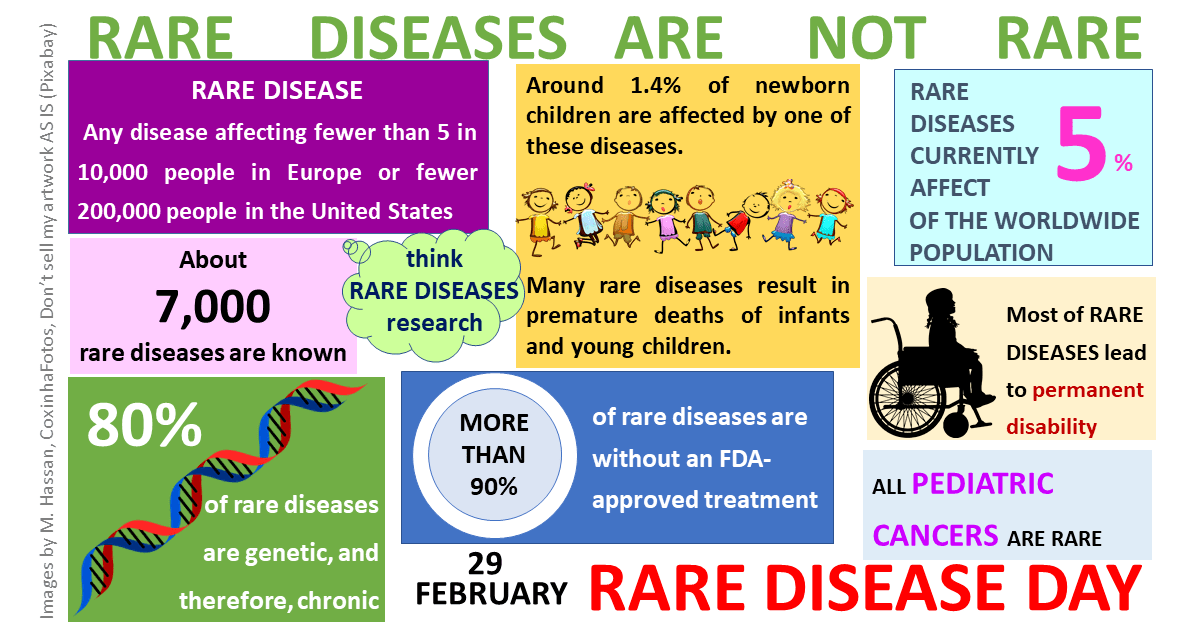
Key points about rare diseases in India:
- India introduced its first National Policy on Rare Diseases in March 2021, aimed at prevention and management.
- Less than 5% of rare diseases have available therapies in India, yet they impact nearly 20% of the population.
- The government allocated funds for rare diseases treatment, but only about half of the funds have been used.
- There are approximately 7,000-8,000 rare diseases in India, with new ones being identified regularly.

The National Policy on Rare Diseases, 2021, focuses on various aspects:
- It provides a comprehensive framework for prevention, management, and treatment tailored to patients’ needs.
- Financial support is offered to alleviate the high costs of treatment.
- There is an emphasis on indigenous research to drive innovation and discovery.
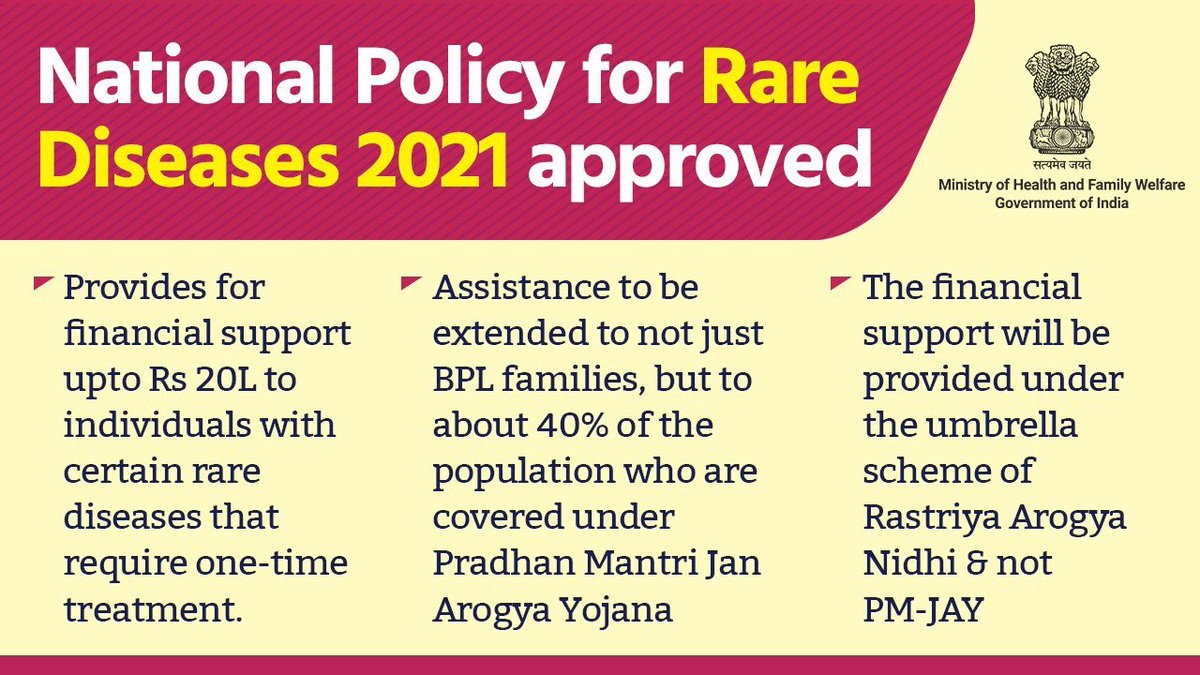
Other initiatives include:
- Establishing a national registry of rare diseases to gather valuable data for targeted interventions.
- Enhancing early detection and prevention efforts through Nidan Kendras.
- Strengthening healthcare infrastructure at Centres of Excellence.
Challenges include the lack of a standardized definition for rare diseases and underutilization of allocated funds.
Patient advocacy groups play a crucial role in pushing for timely treatment and sustainable funding.
Moving forward,
- sustainable funding,
- implementation of the national registry, and
- comprehensive care centers are essential for improving patient outcomes and
- fostering a supportive healthcare environment.
Conclusion,
As India observes World Rare Diseases Day, it’s crucial to address existing challenges and work collaboratively towards better care and advocacy for individuals affected by rare diseases.
- Cross-Voting in Rajya Sabha Elections
Context:
Recent Rajya Sabha elections in Uttar Pradesh, Himachal Pradesh, and Karnataka have raised concerns due to reports of cross-voting, which could undermine the fairness of the electoral process.
It’s important to discuss this issue because understanding the legal framework of Rajya Sabha elections and the impact of cross-voting is crucial for maintaining democratic principles.
What is Cross Voting?
- Cross voting is a term often used in the context of elections, particularly in legislative assemblies or other bodies with elected representatives.
- It refers to the situation where members of a particular party or coalition vote against the directives or expectations of their own party leadership, choosing instead to support a candidate, motion, or policy proposed by the opposition or a different party.
- This can happen for various reasons, such as personal beliefs, political strategy, or disagreements with the party’s stance.
- Cross voting is significant because it can lead to unexpected outcomes in votes, affecting the balance of power, the passage of legislation, or the election of officials within legislative bodies.
- It is often seen as a breach of party discipline, but it can also reflect the individual legislator’s commitment to their principles or constituents’ interests over party lines.
Rajya Sabha Elections and Cross-Voting:
- The Constitution mandates the indirect election of Rajya Sabha members by State Legislative Assemblies, as stated in Article 80.
- Traditionally, these elections were uncontested until 1998, when cross-voting in Maharashtra became a concern.
Legal Provisions and Precedents:
- An amendment to the Representation of the People Act in 2003 introduced open ballot voting to prevent cross-voting.
- The Anti-Defection Law, specified in the Tenth Schedule since 1985, disqualifies legislators who defect from party lines, but it doesn’t apply to Rajya Sabha elections.
- Court rulings, such as in the Kuldip Nayar case in 2006, have upheld the open ballot system for Rajya Sabha elections.
Current Challenges and Legal Remedies:
- Cross-voting undermines the democratic process and electoral integrity.
- The Supreme Court may intervene to address cross-voting issues through suo moto proceedings or reviewing existing judgments.
- Voting against party lines could be considered voluntary defection, leading to disqualification under the Tenth Schedule.
Way Forward:
- To maintain transparency and address cross-voting issues, the Supreme Court may initiate legal action or revisit previous rulings.
- Clearly stating that cross-voting can lead to disqualification may deter future instances and uphold the principles of fair elections.
Conclusion:
Preserving the integrity of Rajya Sabha elections requires addressing cross-voting.
Judicial intervention and enforcement of existing laws are crucial for upholding democratic norms and ensuring free and fair election.

- PM Surya Ghar: Muft Bijli Yojana scheme
Context:
- The Union Cabinet has given the green light to a new rooftop solar scheme called ‘PM Surya Ghar: Muft Bijli Yojana’, aimed at installing rooftop solar panels on 10 million households across India.
- The total budget for this scheme is Rs 75,021 crore.
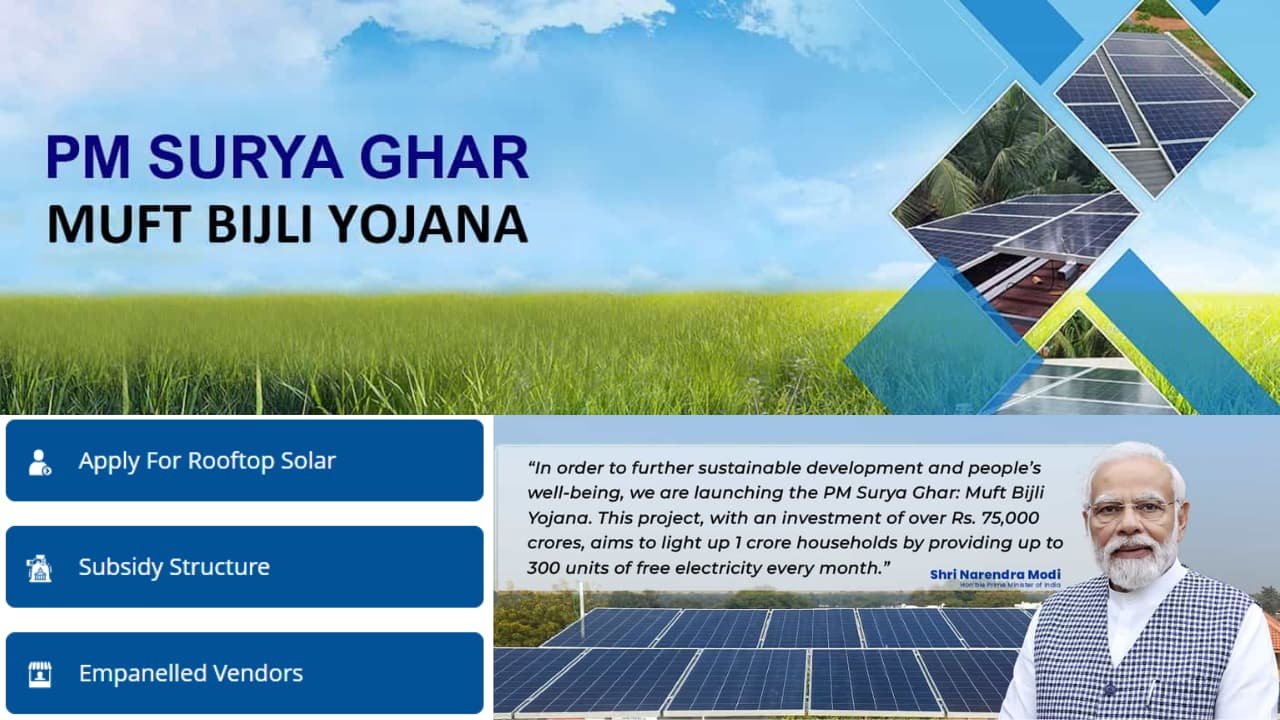
Key details of the scheme:
1. Free Electricity: The goal of PM Surya Ghar: Muft Bijli Yojana is to provide free electricity to households in India.
2. Financial Assistance: The scheme offers financial assistance in the form of 60 percent of the system cost for 2 kW systems and 40 percent of the additional system cost for systems between 2 to 3 kW capacity.
3. Free Electricity Limit: Beneficiaries of the scheme will receive free electricity of up to 300 units per month, resulting in potential annual savings of Rs 15,000-18,000 for households that install rooftop solar systems.
- Application Process: Households can apply for the subsidy through the National Portal and choose a suitable vendor for installing rooftop solar panels.
- Model Solar Villages: The scheme also includes the development of ‘Model Solar Villages’ in each district of the country to serve as examples for the adoption of rooftop solar in rural areas.
Previous Rooftop Solar Programme:
- Before this new scheme, there was already a residential rooftop solar scheme in place.
- The Ministry of New and Renewable Energy (MNRE) had launched the ‘Rooftop Solar Programme Phase-II’ in 2019 with the aim of achieving 4,000 MW of rooftop solar capacity in the residential sector by providing subsidies or central financial assistance.
- As of November 2023, the capacity installed under Phase-II of the scheme was 2,651.10 MW.
- India has launched its first indigenous Hydrogen Fuel Cell Ferry.
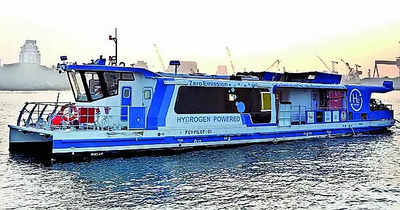
Context:
The Prime Minister of India recently revealed the country’s first-ever hydrogen fuel cell ferry, marking a significant milestone in India’s maritime industry.
This innovative vessel, developed by Cochin Shipyard Limited (CSL), is set to transform water transportation and support India’s efforts towards eco-friendly mobility.
Key features of the hydrogen fuel cell ferry:
Design: The ferry is a 24-meter-long catamaran capable of accommodating up to 50 passengers in its air-conditioned area. It is built using high-quality fiberglass reinforced plastic.
Manufacture: CSL manufactured the vessel, utilizing cutting-edge technology to create a greener mode of transportation that aligns with India’s environmental goals.
Propulsion: The ferry is powered by a 50-kW Proton-Exchange Membrane (PEM) fuel cell and Lithium-Ion Phosphate batteries. This setup ensures zero emissions and minimal noise while maximizing energy efficiency.
Energy Source: The vessel’s propulsion system is fueled by hydrogen stored in five onboard cylinders. Additionally, a 3-kW solar panel supplements energy generation.
Operational Mechanism:
- Hydrogen Fuel Cells: The ferry uses hydrogen fuel cells to generate electricity, emitting only pure water as a byproduct.
- Continuous Operation: Unlike traditional batteries, hydrogen fuel cells do not need recharging, enabling uninterrupted operation with a constant supply of fuel and oxygen.
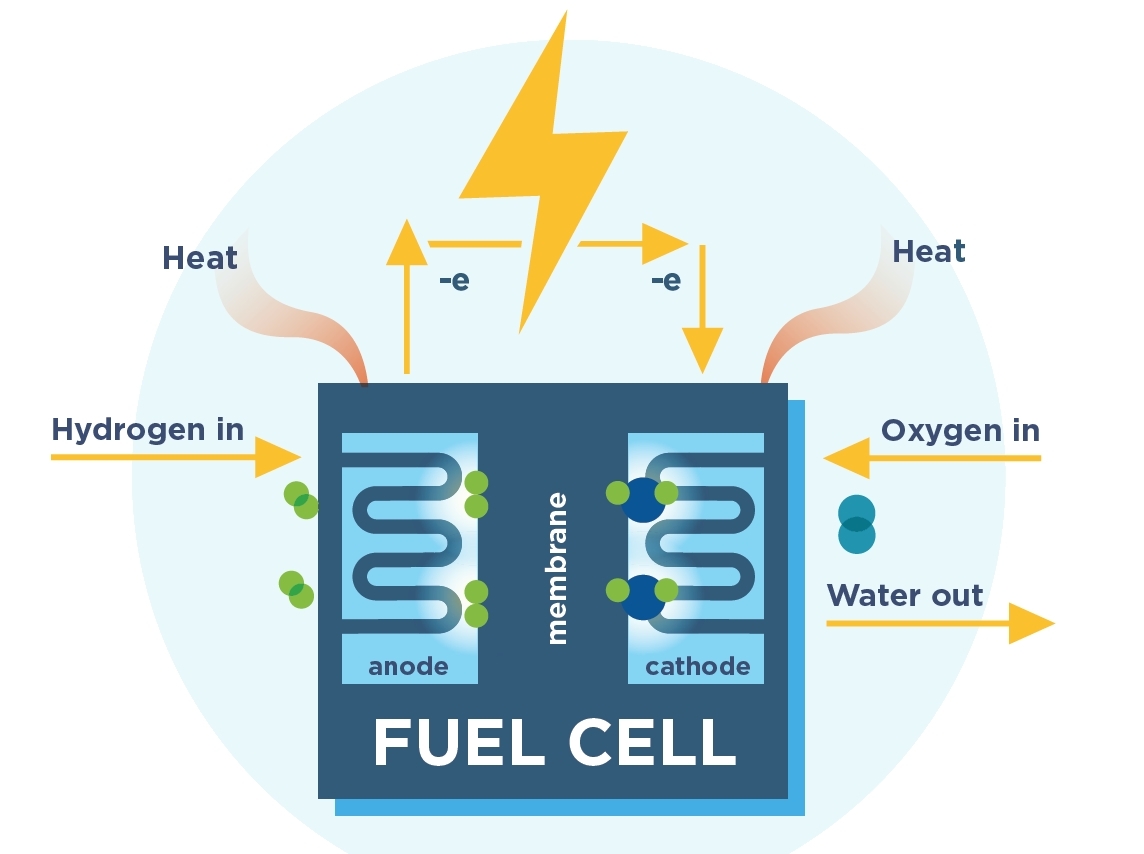
Indigenous Development:
- Collaborative Effort: The construction of the ferry was a collaborative effort led by CSL, incorporating indigenous hydrogen fuel cell systems developed by KPIT Technologies and Council of Scientific and Industrial Research Labs.
- Early Mover Advantage: India’s introduction of the hydrogen fuel cell ferry showcases its commitment to green technology and positions the country as a leader in maritime sustainability.
HARIT NAUKA
- In January 2024, the Shipping Ministry introduced new rules for inland vessels.
- These guidelines require all states to gradually transition their inland waterway passenger fleets to using eco-friendly fuels.
- The goal is to have 50% of these fleets using green fuels within the next ten years, and to achieve 100% by 2045.
- This initiative is part of the Maritime Amrit Kaal Vision 2047, aimed at reducing greenhouse gas emissions from maritime activities.
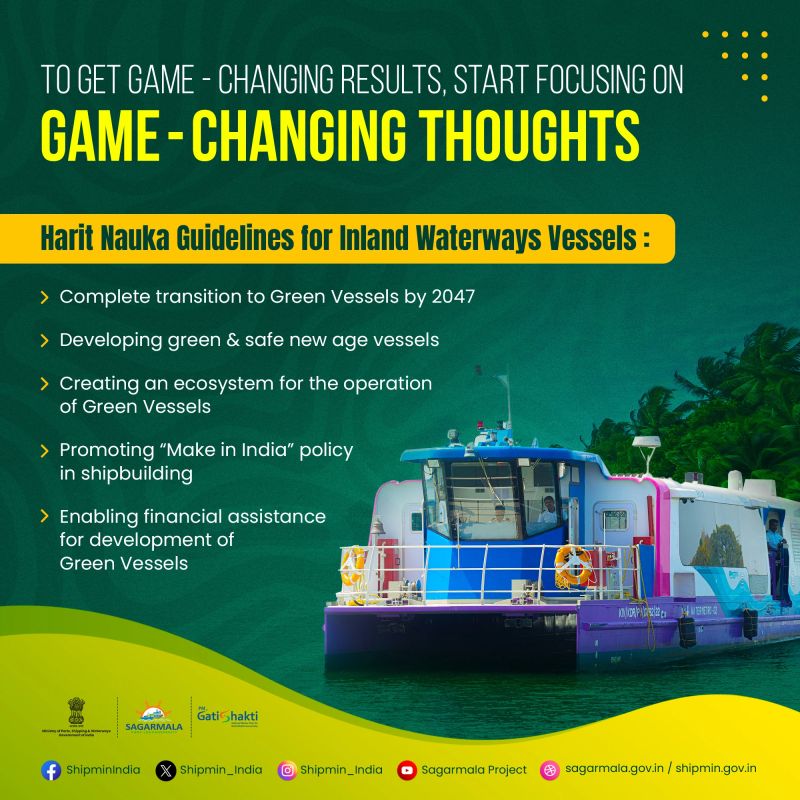
- Agalega Island
New Infrastructure on Agaléga Island
India and Mauritius collaborate to inaugurate a new airstrip and jetty on Agaléga Island.

Details of the Development
- The new facilities include an extended airstrip, now 3,000 meters long, and an expanded St. James Jetty, measuring 255 meters.
- Agaléga Island is situated approximately 650 km from the main Mauritius island and consists of two small islands: the North island (the main one) and the South Island.
- India asserts that these new facilities are part of its Security and Growth for All in the Region (SAGAR) policy, which aims to increase maritime cooperation between countries in the region.
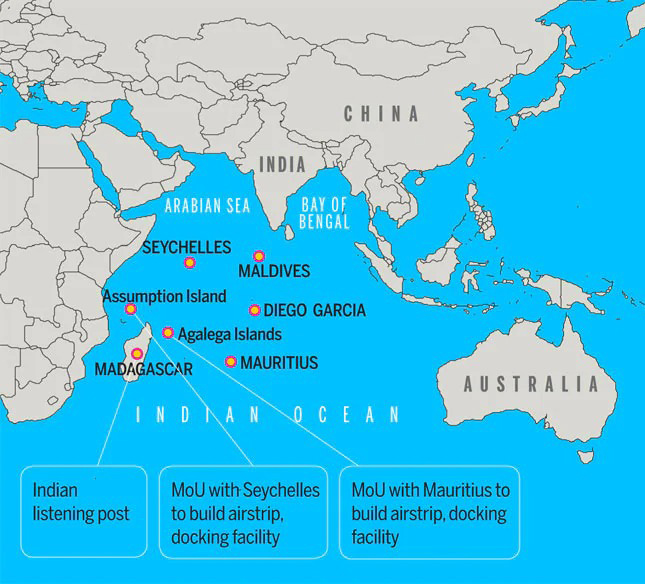
Significance of the Move
- Enhanced Monitoring and Security: The extended airstrip and jetty will bolster Mauritius’ capability to monitor its exclusive economic zon e (EEZ) and combat piracy, terrorism, and illegal fishing.
- Improved Maritime Surveillance for India: India stands to benefit from better monitoring of vital sea lanes in the Indian Ocean, in conjunction with the coastal surveillance radar system in the Seychelles.



